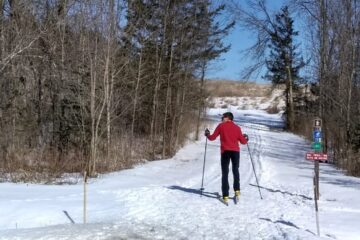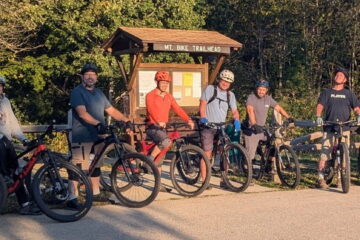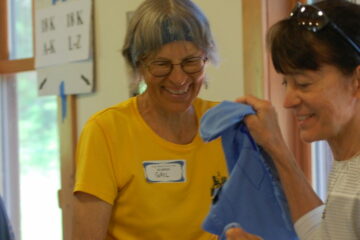The official beginning of the singletrack bike trails at Blue Mound State Park dates to 2000 when a variance to the Master Development Plan was written by DNR staff to allow for the presence of singletrack bike trails in the park. The variance states:
Development: Construct primitive, single track, natural surfaced off-road biking trails that
are family oriented in skill and length on areas in the park that have already gone through
disturbance. Snowshoers may be able to utilize these 18-24” trails as well in winter. Great care
will be taken to design this natural-surfaced, primitive trail appropriate to soil types and located
along slopes (verses “down”) to minimize erosion…”
Please note that the relevant text says the type of trail to be built will be “family oriented”. It also specifically states that the trail will be built to “minimize erosion.”
How did most of the bike trails end up as expert trails instead of the family-oriented trails specified in the Master Plan?
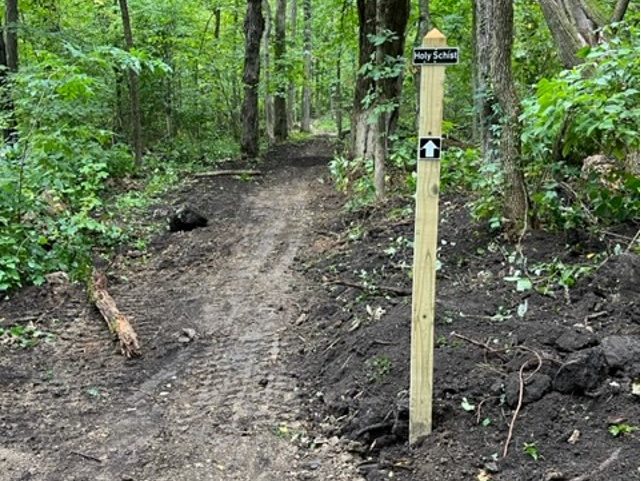
They were not built to be expert trails but over time they changed from easy to expert due to unanticipated weathering effects, and lack of resources to build trail that was resistant to those effects. Proper trail building technique begins with removing plants, then topsoil from the trail as construction proceeds. This exposes the mineral soil (mostly clay at Blue Mound) which is shaped and compacted as needed. The problem faced by (Capital Off Road Pathfinders) CORP at Blue Mound is the topsoil is exceptionally deep, and the slope of the mound is very shallow. It’s not unusual to have 12”, or more of topsoil where the trail is going to be built. The slope of the Mound averages around 5% and drops nearly flat in areas like Gneiss Trail just below the trail head. Until very recently, CORP depended entirely on volunteer labor to perform all trail construction. It has never been feasible for volunteers using manual tools to remove the many tons of topsoil it would have taken to expose the mineral soil underneath. All trail construction at Blue Mound, until quite recently, has been a sub-optimal compromise between what should have been done and what CORP had the capacity to actually do. This compromise resulted in trail built on topsoil. The goal was to create an easily accessible trail but compression of the topsoil by the trail users resulted in rocks and roots “popping out” of the trail surface. This created a trail that was anything but “family oriented”.
The trails seem fine the way they are. Why go back and change them now?
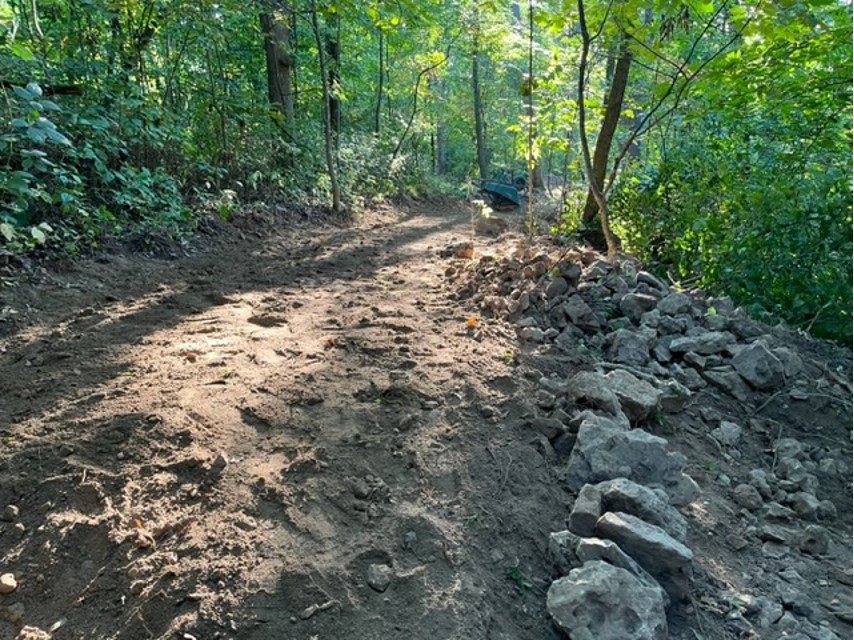
There are several reasons why it makes sense to rebuild the trails. Firstly, the topsoil that the trails are built on drains out slowly. Blue Mound is often the last trail to open in the spring and is closed more than most area trails due to soggy conditions.
Secondly, there are more than a few places where the trail was laid out with excessive slope and has become badly eroded. It’s not obvious over one or two riding seasons that there are serious erosion issues for the bike trails at Blue Mound, but the so-called “technical” climbs didn’t start out with lots of exposed rocks and roots. That happened because the dirt that formed the original tread has washed away.
Finally, there is the issue of access. More than a few riders stopped coming to, or never even tried riding at Blue Mound over the years because it changed into something it was never intended to be: exclusively for expert riders. Blue Mound can and will continue to have features to challenge the abilities of its users. But the goal of the current rebuilding effort will, as stated in both the Variance that began the trails, and restated in the new Master Plan, will be to have trails that can be enjoyed by most riders.
What happens next?
CORP has scheduled a work day for Blue Mound State Park on April 13th from 9:30 AM to noon. CORP will be performing repairs to Gneiss. There remain some washed-out trail segments from last spring’s flood.
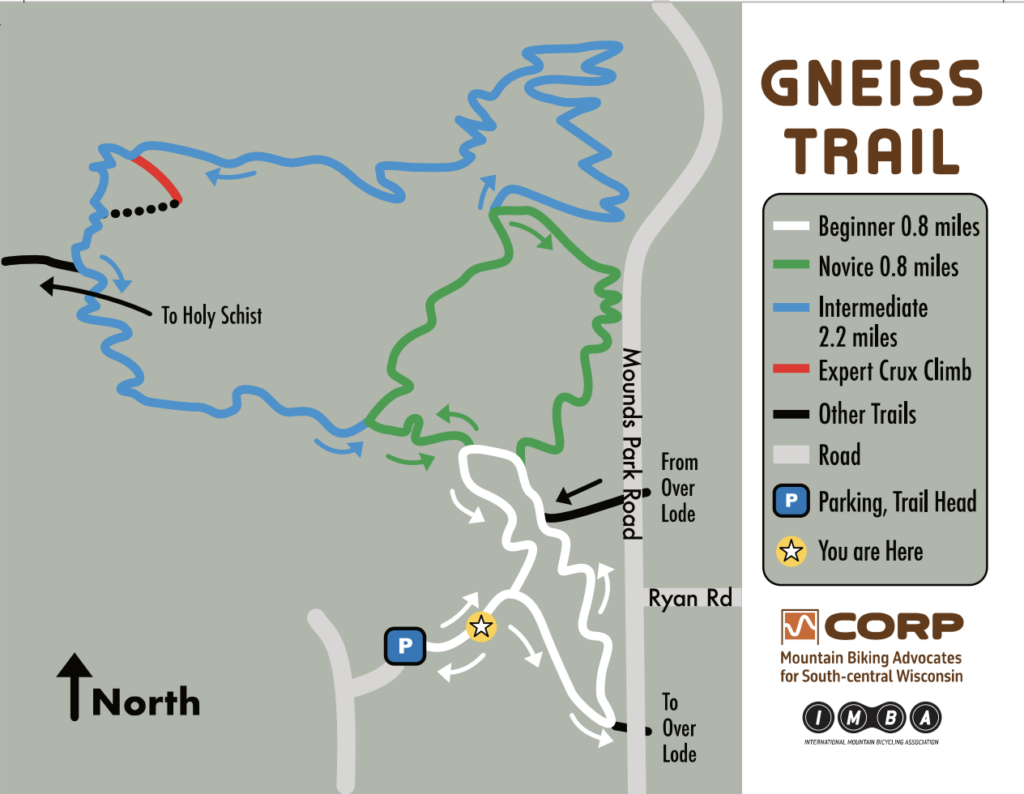
Signs will be posted on the old trail that was vacated in favor of the reroute of Holy Schist, which opened in 2023, in an effort to reach out to the users of the trail who may not be aware that the work is approved by the land manager and has been reviewed by CORP management. A number of trail users have expressed resistance to this change. Unfortunately, there is not enough manpower to maintain the old trail, even if it was to be reserved exclusively for snowshoe users. The original trail was replaced because it was in bad condition, and keeping it open is not an option because the Master Plan shows that CORP will vacate it.
Volunteers make it happen. To assist with trail improvements on April 13, please contact the Blue Mound State Park Trail Stewards, Walter Hougas or Gary Schweisthal. View more workday event details here.
